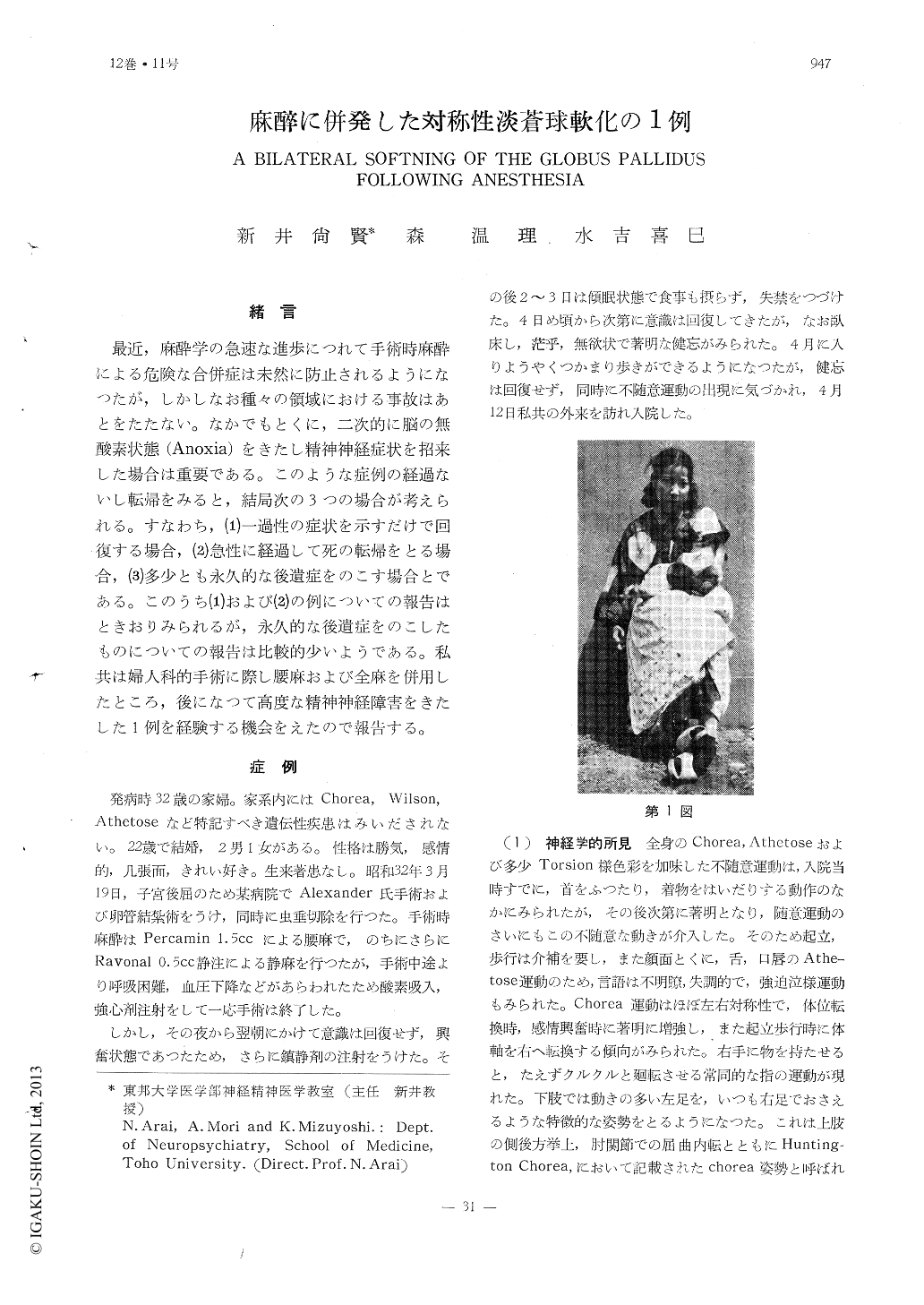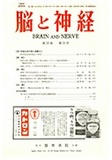Japanese
English
- 有料閲覧
- Abstract 文献概要
- 1ページ目 Look Inside
緒言
最近,麻酔学の急速な進歩につれて手術時麻酔による危険な合併症は未然に防止されるようになつたが,しかしなお種々の領域における事故はあとをたたない。なかでもとくに,二次的に脳の無酸素状態(Anoxia)をきたし精神神経症状を招来した場合は重要である。このような症例の経過ないし転帰をみると,結局次の3つの場合が考えられる。すなわち,(1)一過性の症状を示すだけで回復する場合,(2)急性に経過して死の転帰をとる場合,(3)多少とも永久的な後遺症をのこす場合とである。このうち(1)および(2)の例についての報告はときおりみられるが,永久的な後遺症をのこしたものについての報告は比較的少いようである。私共は婦人科的手術に際し腰麻および全麻を併用したところ,後になつて高度な精神神経障害をきたした1例を経験する機会をえたので報告する。
The patient, a woman of 32 years of age, was unexpectedly suffered from severe co-mplications as apnoea, fall of blood pressure and cyanosis following spinal and intravenous anesthesia in the time of gynecological ope-ration. After the operation the disturbance of consciousness still continued for several days, and then Korsakows syndrome, mental deterioration and choreoathetosis appeared. These neuropsychiatric symptoms were sta-tionary observed during one year and eight months until her death from general wea-kness due to tuberculosis. The most impor-tant histopathological findings were bilate-ral softning of the globus pallidus and the Ammon's horn. Degenerative changes of nerve cells in the cerebral cortex, the nucleus cau-datus, the thalamus opticus, the substantia nigra and the cerebellum were also observed. These facts showed the pathological changes of the brain occuring as a result of anoxia following aensthesa.

Copyright © 1960, Igaku-Shoin Ltd. All rights reserved.


